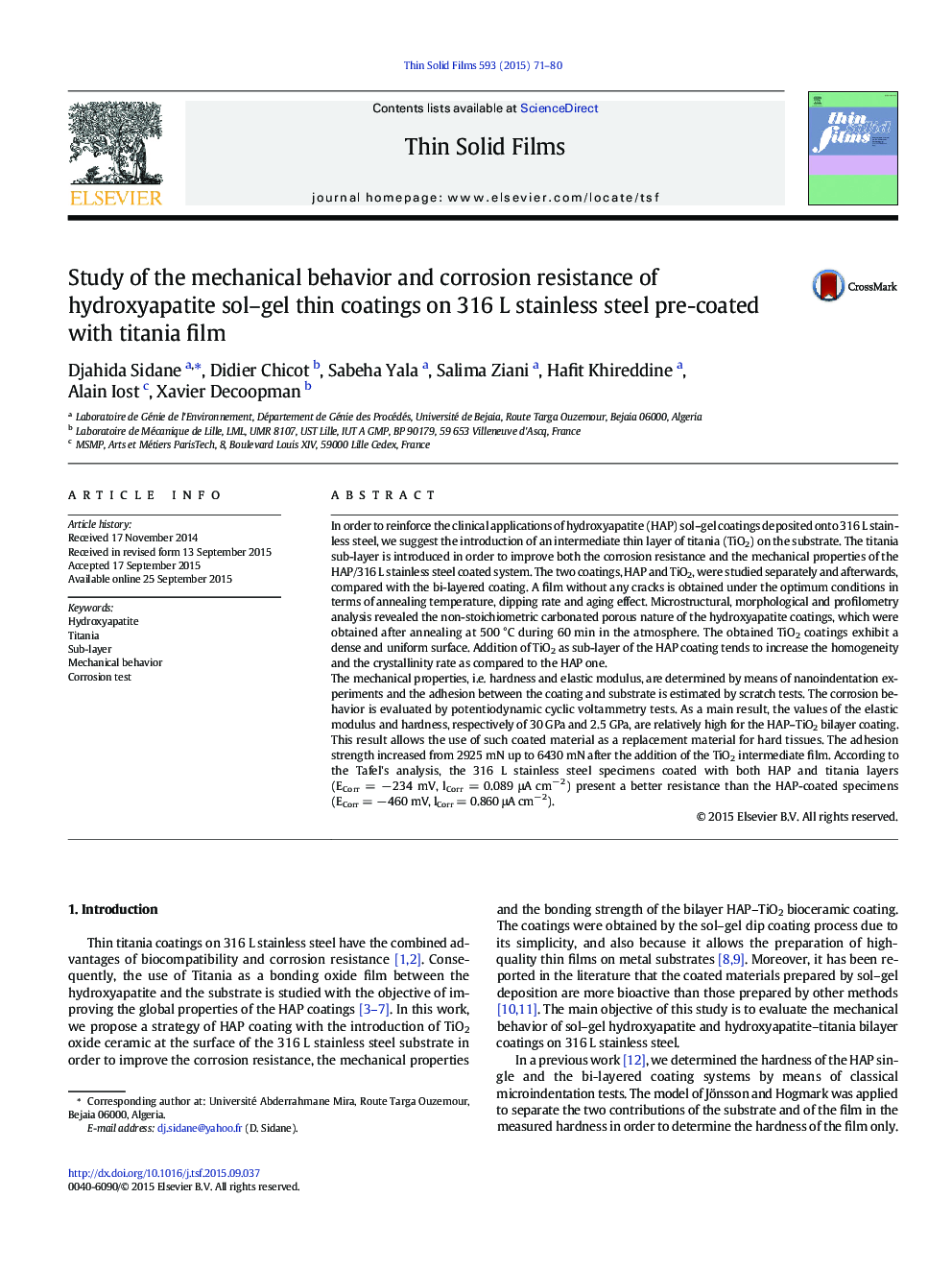| Article ID | Journal | Published Year | Pages | File Type |
|---|---|---|---|---|
| 1664337 | Thin Solid Films | 2015 | 10 Pages |
Abstract
The mechanical properties, i.e. hardness and elastic modulus, are determined by means of nanoindentation experiments and the adhesion between the coating and substrate is estimated by scratch tests. The corrosion behavior is evaluated by potentiodynamic cyclic voltammetry tests. As a main result, the values of the elastic modulus and hardness, respectively of 30 GPa and 2.5 GPa, are relatively high for the HAP-TiO2 bilayer coating. This result allows the use of such coated material as a replacement material for hard tissues. The adhesion strength increased from 2925 mN up to 6430 mN after the addition of the TiO2 intermediate film. According to the Tafel's analysis, the 316 L stainless steel specimens coated with both HAP and titania layers (ECorr = â 234 mV, lCorr = 0.089 μA cmâ 2) present a better resistance than the HAP-coated specimens (ECorr = â 460 mV, lCorr = 0.860 μA cmâ 2).
Related Topics
Physical Sciences and Engineering
Materials Science
Nanotechnology
Authors
Djahida Sidane, Didier Chicot, Sabeha Yala, Salima Ziani, Hafit Khireddine, Alain Iost, Xavier Decoopman,
